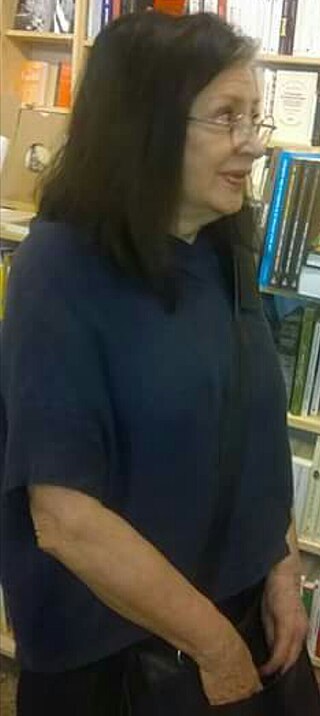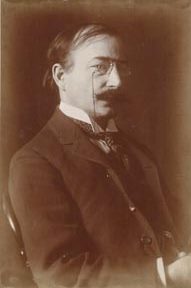
Alfred Pellan was an important figure in twentieth-century Canadian painting.

Marc-Aurèle de Foy Suzor-Coté was a French Canadian painter and sculptor. He was one of the first native-born Canadian artists whose works were directly influenced by French Impressionism and Post-Impressionism.
Claude Tousignant is a Canadian artist. Tousignant is considered to be an important contributor to the development of geometric abstraction in Canada. He masterly used alternating values of complementary colours in innovative ways in his circle/target paintings.
Pierre Gauvreau was a Québécois painter and writer who also worked in film and television production.

Serge Lemoyne was a Canadian artist from Quebec. He worked as a performance artist as well as creating paintings, assemblages and prints. Lemoyne explored themes such as the environment, technology, and social justice. Lemoyne's work was exhibited in Canada and internationally, and he received numerous awards throughout his career. He died in 1998 at the age of 57.

Jocelyne Alloucherie, is a Canadian sculptor who explores the relationships between sculpture, architecture and photography through installations.
Fernand Toupin was a Québécois abstract painter best known as a first-generation member of the avant-garde movement known as Les Plasticiens. Like other members of the group, his shaped paintings drew upon the tradition of geometric abstraction, and he cited Mondrian as a forerunner. In 1959, Toupin began working with a more lyrical, though abstract, way of painting. The last decade of his career saw his return to geometric abstraction. Like Jean-Paul Mousseau, Toupin created works which lay outside the standard boundaries of art such as his stage sets for ballets.
Albert Dumouchel was a Canadian printmaker, painter and teacher. Dumouchel also was a photographer and musician. His work as an artist ranged from abstract to figurative.
Peter Krausz is a Romanian-born Canadian artist. Throughout his career, he worked within the fields of painting, drawing, installation, and photography and, since 1970, exhibited in museums and galleries across Canada, the United States, and Europe. He is best known for large-scale landscape paintings of the Mediterranean.

Ghitta Caiserman-Roth was a Canadian painter and printmaker. She was a founder of the Montreal Artist School and her work is in the National Gallery of Canada. Caiserman-Roth was also an associate member of the Royal Canadian Academy and the first painter to receive the Governor General's Award for Visual Media and Art.

Henri Beau was a French-Canadian Impressionist painter. He is noted for Chemin en été, La dispersion des Acadiens, L'arrivée de Champlain à Québec, and Les Noces de Cana. Beau is a largely forgotten artist due to his long absence from Canada. His widow Marie Beau worked towards establishing his reputation as an artist in Canada after his death. He was only recognized as a notable artist decades later, with major retrospectives of his paintings celebrating his career by the Galerie Bernard Desroches in Montréal in 1974, and at the Musée du Québec in Québec City in 1987.
Jeanne Leblanc Rhéaume was a Canadian artist.
Janine Leroux-Guillaume (1927-2018) was a Canadian master printer but also worked in other media including painting, collage and sculpture.
Monique Charbonneau (1928–2014) was a Canadian artist, known for her etchings, lithographs, lyrical wood engravings and gouache paintings. She designed the Canada Post stamp to commemorate the life and work of Quebec poet Emile Nelligan (1879-1941) with the illustration of his poem Le vaisseau d'or. She is one of several artists from Quebec that author Maria Tippett says derived their inspiration from nature.
Suzanne Bergeron was a Canadian abstract painter.
Stanley Cosgrove was a Canadian painter, draughtsperson and muralist. His landscapes are praised for their serenity.
Pierre Ayot was a multidisciplinary artist, university professor and the founder of Atelier Libre 848 (1966), an art centre devoted to printmaking that provides its members with training, expertise and facilities. He also was a founding member of the group Média, gravures et multiples (1969).
Roland Poulin is a Canadian contemporary sculptor whose work is characterized by its horizontality and weightiness. He has lived in Sainte-Angèle-de-Monnoir, Quebec, since 1986.
Jean-Paul Jérôme was a painter, designer and sculptor, who was a co-founder of Les Plasticiens in 1955. He was a key figure in Quebec's abstract art scene of the second half of the 20th century.
Rodolphe de Repentigny was a painter, art and literary critic for the newspaper La Presse in Montreal (1952-1959), theorist, photographer and mountaineer. He was a key member of Les Plasticiens and was the writer of the Manifeste des plasticiens. He painted under the pseudonym Jauran.







